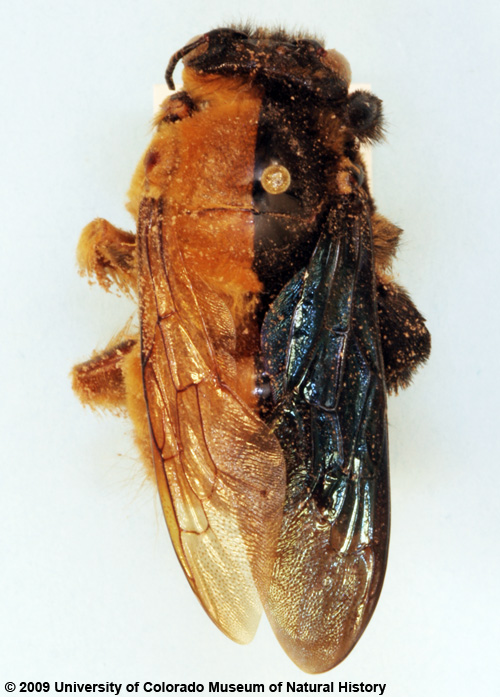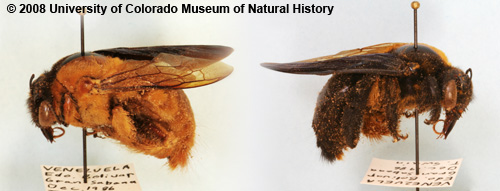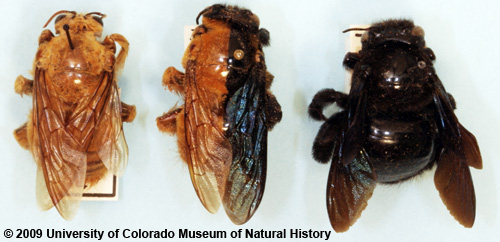OBJECT OF THE MONTH - JANUARY 2009
Bilateral Gynandromorph of a Carpenter Bee (Genus Xylocopa) from Venezuela

Dorsal (top) view of a bilateral gynandromorph carpenter bee (genus Xylocopa). The left side is male and the right side is female; it measures 3 cm long (about 1.2 inches)!
Gynandromorphs are individual organisms that show characteristics of both males and females. The term comes from gyn, meaning woman, andro, meaning man, and morph, meaning form or shape. In insects, gynandromorphs are typically detected by differences in coloration, size, and shape.
Gynandromorphs are especially easy to detect when males and females are quite different in coloration, such as in this carpenter bee. In gynandromorphs, individual cells can express either male or female characteristics--thus parts of an insect, such as parts of the wings, may be "male" or "female."
In the most striking examples of gynandromorphs, bilaterial gynandromorphs, the individual is half male and half female, which is the case in this carpenter bee.

The same gynandromorph carpenter bee from both sides. The light-colored side is male and the dark-colored side is female.
In such a case, the first division of a fertilized egg into two cells results in one of the cells being male and the other being female. This is the result of the chromosomes that determine gender ending up in one or the other of the cells. Each of these two cells then gives rise to the cells that make up the two halves of the insect's body.

The gynandromorph carpenter bee compared with typical male and female specimens. The female is larger and darker in color than the male.
This carpenter bee of the genus Xylocopa was collected by Tom Swain in Venezuela. Unfortunately, there is no exact collection date or exact location given on the label.
The bee is a bilateral gynandromorph--the left side of the specimen (the light side) is male and the right side (the dark side) is female. The females of this species are larger than the males. This difference in size is apparent in the wing length. Such bilateral gynandromorphs are very unusual and extremely rare in collections. The Entomology Section is fortunate to have this specimen.


